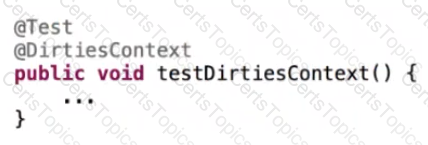VMware Related Exams
2V0-72.22 Exam







Refer to the exhibit.

What statement is true about @DirtiesContext?
Which three statements are advantages of using Spring’s Dependency Injection? (Choose three.)